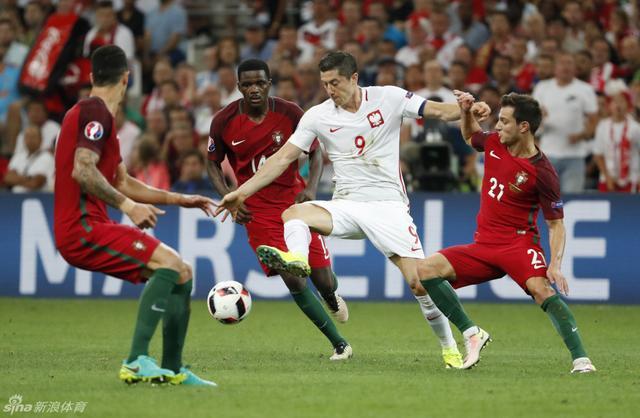Understanding the Rules of Table Tennis:A Comprehensive Guide in English
Introduction
Table tennis, also known as ping pong, is a sport that has captivated audiences worldwide with its fast-paced action and strategic gameplay. Originating in the late 19th century, it has evolved into a highly competitive sport with a set of rules that govern its play. In this article, we will delve into the rules of table tennis, providing a clear and comprehensive guide for both beginners and seasoned players alike. Whether you're looking to understand the basics or brush up on the intricacies of the game, this guide will help you navigate the world of table tennis with ease.
Basic Equipment and Setup
Before we dive into the rules, let's first discuss the basic equipment and setup required for a game of table tennis. The game is played on a table divided into two equal halves by a net. The table is 2.74 meters long, 1.525 meters wide, and the height of the playing surface is 76 centimeters. The net is 15.25 centimeters high and is supported by net posts that are 15.25 centimeters high themselves.
Each player uses a paddle, which can be made of various materials but must be flat and racket-shaped. The ball used in table tennis is 40 millimeters in diameter and is made of celluloid or a similar material. It must be white or orange and have a mass of 2.7 grams.
The Game's Objective
The primary objective of table tennis is to score points by causing your opponent to fail to return the ball before it bounces twice on their side of the table. A point is also scored if the opponent commits a fault. The player or team that reaches 11 points first wins a game, provided there is at least a two-point difference between the two players. If the score reaches 10-10, the game continues until one player has a two-point lead.
Service and Reception
Service is the act of putting the ball into play. The server must toss the ball so that it rises at least 16 centimeters above the playing surface and then falls without touching anything before being struck. The server must hit the ball so that it passes over the net and touches the opponent's court. The receiver must let the ball bounce once on their side of the table before returning it.

The service alternates between players after each point, and the first player to serve in a game is chosen by a coin toss or mutual agreement. In doubles, the server and receiver must be the players standing diagonally opposite each other.
Scoring
In table tennis, a point is scored in the following situations:
- The opponent fails to make a legal return.
- The opponent commits a fault (e.g., touching the net, moving the table, or hitting the ball twice).
- The opponent's return lands outside the boundaries of the court.
If a let (a serve that is not allowed to be returned) occurs, the point is replayed without any penalty.
Out and Faults
A ball is considered "out" if it lands outside the lines of the court or fails to pass over the net. Additionally, a player commits a fault in several situations, including:
- Hitting the ball twice in succession.
- Touching the net with the body or racket.
- Obstructing the ball.
- Moving the playing surface.
- Failing to make a legal service or return.
Rallies and Exchanges
A rally is a sequence of strokes where the ball is struck back and forth between players. A rally ends when a point is scored or a fault is committed. Players must alternate strokes, and the ball must be struck with one side of the racket.
Timeouts and Delays
Players are allowed a limited number of timeouts during a match. These timeouts can be used for rest, strategizing, or medical attention. The duration and number of timeouts allowed may vary depending on the competition rules.
Penalties and Disqualifications
Penalties can be imposed for unsportsmanlike conduct, excessive delays, or repeated faults. Penalties may include loss of points, loss of games, or even disqualification from the match or tournament.
End of a Game and Match
A game is won when a player reaches 11 points with at least a two-point lead. If the score is tied at 10-10, the game continues until one player has a two-point advantage. In a match, the number of games required to win may vary. For example, a match might be best of five games or best of seven, depending on the competition format.
Doubles Play
In doubles, the serve alternates between the two teams, and each team member serves for two consecutive points before switching to the next player. The order of play is also crucial in doubles. The server must serve to the receiver diagonally opposite, and the first player to return the serve must be the one diagonally opposite the server. After the first return, players can move freely around the table to return the ball.
Conclusion
Understanding the rules of table tennis is essential for enjoying the game and competing at any level. From the basic setup and objective to the nuances of service, scoring, and faults, this guide provides a comprehensive overview of the sport's regulations. Whether you're a casual player or an aspiring professional, mastering these rules will enhance your table tennis experience and improve your gameplay. So, grab your paddle, find a partner, and get ready to engage in the exciting world of table tennis!
体育资讯
MORE>- 搜索
- 最近发表
-
- NBA湖人vs猛龙128-111全场解析:詹姆斯戴维斯联手制胜,关键转折与战术深度剖析
- 梅西球衣退役了吗?探索足球传奇的球衣故事
- 掌握天气的英语表达,日常对话中的实用指南
- 揭秘四川省大乐透兑奖中心,中奖者的梦幻之地
- 选号码的艺术,掌握技巧,让数字为你带来好运
- 足球术语的英文表达,从球场到术语的全面指南
- 掌上财经助手,如何轻松下载手机新浪财经APP
- 探索新浪财经手机版首页,您的移动金融信息中心
- 探索露天体育场的英文魅力,从草坪到看台的全球语言
- 足球盛宴,2026世界杯预选赛18强赛程全解析
- 探索北京鸟巢体育场,奥运遗产与现代建筑的融合
- 新浪财经手机版,随时随地掌握财经脉搏
- 探索英语中的尺码表达,37码鞋的地道说法
- 如何用英语表达累,实用表达与生活场景
- 掌上排球激情,新浪体育手机版女排,随时随地的体育盛宴
- 解锁体育场的英语密码,从日常对话到国际赛事
- 头晕目眩,英语表达的艺术
- 探索四川福彩网开奖,揭秘背后的机制与幸运时刻
- 梦想成真,四川省双色球开奖结果的奥秘与魅力
- 足球的绿洲,运动场地足球场的魅力与影响
- 标签列表
-
- 2024年欧洲杯预选赛 (15)
- 2024欧洲杯比赛时间 (16)
- 2024欧洲杯百度百科 (21)
- 2024欧洲杯杯 (11)
- 为啥欧洲杯 (9)
- 2024欧洲杯完整赛程表 (9)
- 欧洲杯在哪个国家举行2024 (10)
- 欧洲杯一共多少场 (9)
- 欧洲杯参赛球队有几支 (14)
- 欧洲杯哪个国家厉害 (12)
- 欧洲杯多少支球队参加 (9)
- 欧洲杯共多少场比赛 (11)
- 2024欧洲杯主办城市 (11)
- 欧洲杯哪个队最有可能进决赛 (12)
- 2024年欧洲杯主办国 (11)
- 欧洲杯一场多少人 (12)
- 哪个地方可以看欧洲杯 (10)
- 在哪里可以看欧洲杯预选赛 (23)
- 欧洲杯一场比赛时间多长 (9)
- 欧洲杯一共多少球队 (14)
- 欧洲杯为什么没有中国 (9)
- 欧洲杯有多少只球队参加 (14)
- 直播培训学校 (10)
- 直播吧 (16)
- 直播吧官网 (11)


